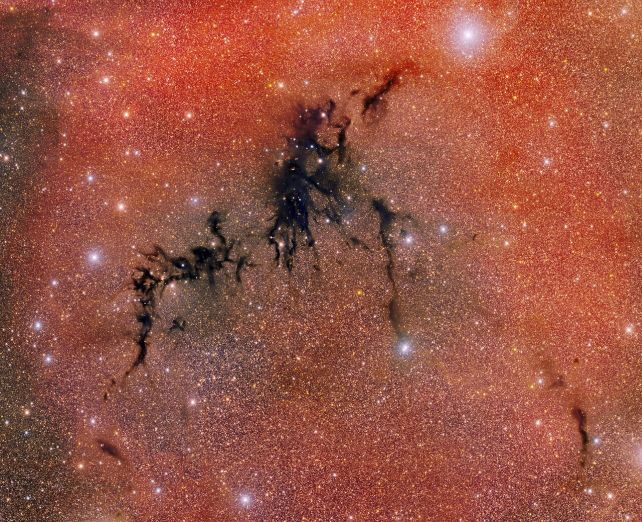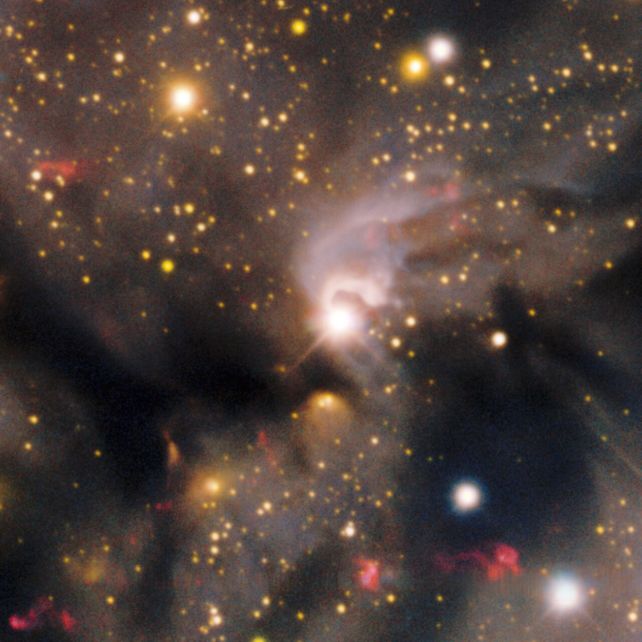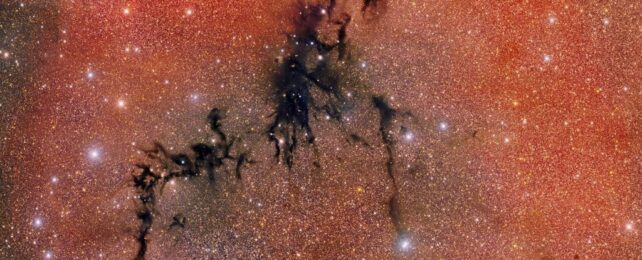"There is a crack," Leonard Cohen croons, "in everything; that's how the light gets in."
He was not referring specifically to a structure in space called Circinus West, but the words apply. The object looks, to our eyes, like nothing so much as an eerie crack, a void in space-time where darkness bleeds through.
Its true nature is significantly more marvelous: it's where light is literally being born, a thick, dark cloud of molecular material in space from which new stars are forming.
The cloud, called a dark nebula, is so dense that the hot, bright, baby stars within are hidden from view – but hints of their presence are there, if you know how to look. New images from the US Department of Energy's Dark Energy Camera show them in stunning detail.

Nebulae come in different categories, depending on how they are lit. Reflection nebulae, such as the Pleiades nebula, are those that reflect the light of the stars around them. Emission nebulae are the ones that tend to get the most attention; they emit their own light in optical wavelengths, created by the ionization of the particles within them, mostly due to ultraviolet irradiation from nearby stars.
Dark nebulae are exactly what they sound like. They're very thick and dense, neither emitting nor reflecting light in optical wavelengths, but absorbing and scattering it instead. They look like holes in space, anomalous gaps in the sea of stars that makes up the cosmos.
But inside their thick and dusty hearts can be found the perfect conditions for star formation. Baby stars are born from overdensities in already dense, dusty, gassy environments. A knot in the gas will become so dense that it collapses under gravity; the spinning, collapsed knot becomes the seed of a baby star, greedily slurping up mass from the abundance of material around it.
Baby stars are messy eaters, and astronomers believe that not all of the material slurped by the protostar ends up adding to its mass. Some of it is instead diverted away from the star, along its external magnetic field lines, and accelerated towards the poles. When it reaches the poles, it is launched away at high speeds as collimated jets.
These jets punch into the surrounding material, their high temperatures turning it into plasma. This produces two glowing lobes on either side of the protostar, which is still shrouded by a thick cloud of dust and gas. But we can see the jets and the lobes. This short-lived phase of a baby star's evolution is known as a Herbig-Haro object, and they are pretty rare.
Circinus West, which sits about 2,500 light-years away and measures about 180 light-years across, is home to a number of Herbig-Haro objects, whose glowing lobes peek through the darkness. Other signs of star formation include the cavities carved out by growing stars, which generate powerful protostellar winds in addition to the jets, and gleams of light.

Eventually, the winds and jets will push away the remaining material, cutting off stellar growth, but allowing the light of the star to stream freely through the Universe. But this current, crucial stage of star formation is one that is somewhat mysterious to us, cocooned as it must be in the dark cloud from which the stars are born.
Images like the new observations of Circinus West can help astronomers understand how baby stars are born, and how their tantrums shape the Universe.
You can download wallpaper-sized versions of the new Dark Energy Camera image on the NOIRLab website.
